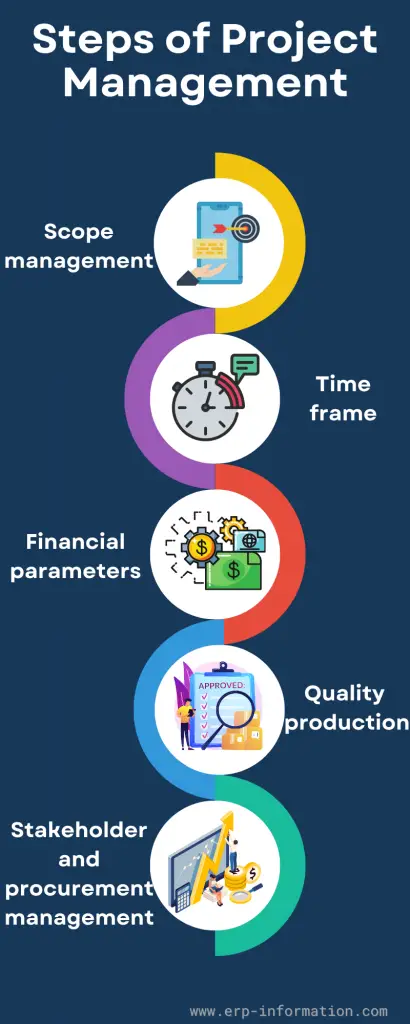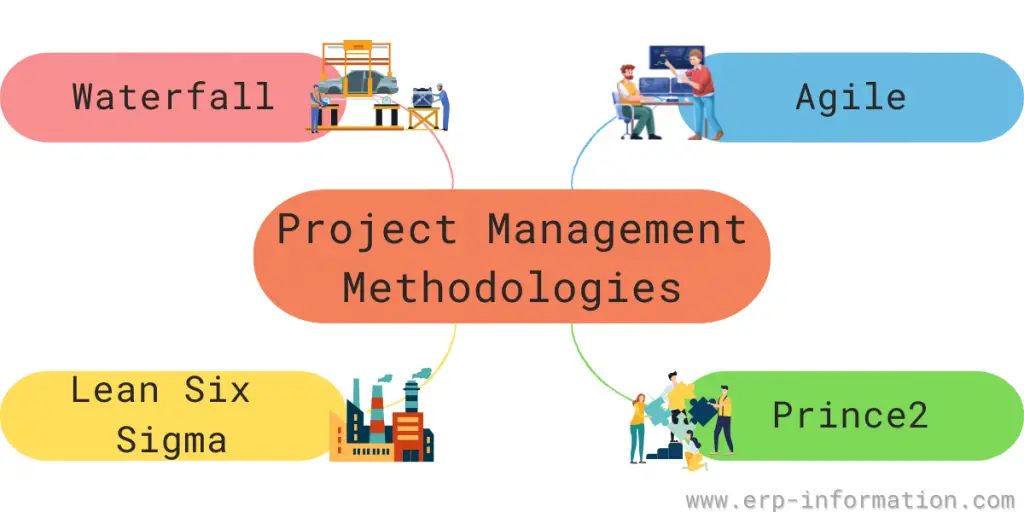Project management is key for success, from the day-to-day operations of a small business to multi-million dollar engineering and civil construction projects.
This blog post provides much information about this critical skill set that companies rely on daily!
Businesses of all sizes in all stages need Project management. Projects are essential to modern-working life, yet many employees need the proper training to manage them.
Therefore, a strong project management process is indispensable to maximize success and ensure everyone benefits.
Accomplishing any goal, either grand or minuscule, requires excellent project management. By streamlining workflow and ensuring everything runs efficiently, businesses of all sizes can maximize their potential for success.
What is Project Management?
It is the process of successfully planning, organizing, and managing resources to complete specific project goals and objectives.
It is a profession that applies engineering, scientific, business, and other skills to complete projects efficiently and on time.
It involves using various tools, resources, and strategies to complete the project within its timeline and budget constraints. It begins by identifying scope, timeframes, and financial parameters, followed by assessments on efficiency optimization with objectives in mind.
Finally, all actions taken will be meticulously recorded via necessary documentation for future reference, i.e., Project documentation.
Steps
The following steps are to be taken to complete the project.
Scope management
Key elements need to be defined and monitored to tackle any project successfully. This involves understanding stakeholder needs before breaking the work into achievable tasks with milestones. Keeping an eye on progress and managing changes is essential for a successful overall outcome.
Time frame
Project Planning is a vital part of project management, and one crucial component is determining the amount of time needed to achieve success. By accurately gauging how much should be allotted for each task, you can craft an effective timeline to help ensure all goals are met on time. So a perfect project plan is necessary to reach the goal in time.
Financial parameters
Financial parameters are essential to successful project management. Collecting, analyzing, and reporting on project costs can identify budget overages early to stay within established limits.
With this information, an effective plan for the project’s future can be created and revised as necessary along its journey toward completion.
Quality production
The goal of the project is to create high-quality products. It ensures that all the activities related to creating the project meet quality expectations by constantly measuring the quality of work and correcting any problems.
Risk is common for every project. Therefore, you must find, evaluate and avert or reduce the risks.
Stakeholder and procurement management
You must build and maintain relationships with people and companies who can help you with your project to achieve the objectives.
That includes finding companies who can sell the products and services you need, identifying the stakeholders and what they expect, and then developing a plan to keep them updated on your progress.
Project Management Methodologies
Waterfall
The waterfall methodology is a sequential process for managing projects where each phase must be completed before the next step can start.
This project management methodology is often used in manufacturing and construction settings where it’s important to have a clear and precise plan for each project step. It can also be useful when working with teams in different parts of the world, as it allows for more coordinated communication.
Agile
Agile project management methodology is a framework that helps teams to be more flexible and responsive to change. It does this by breaking down the project into small chunks (called “sprints”), which are completed quickly. This allows for regular feedback and course corrections, which allows one to adapt as new information becomes available.
The Agile approach is especially well-suited to software development, where changes in requirements are common. However, you can also use it for other projects, such as marketing or product launches.
Lean Six Sigma
Lean Six Sigma is a management methodology that integrates lean manufacturing concepts and Six Sigma quality improvement methods.
Lean Six Sigma is designed to help organizations achieve dramatic improvements in performance by identifying and eliminating waste and reducing variation. The methodology is based on the premise that if key processes are managed effectively, the organization will be more efficient and effective.
PRINCE2
The Prince2 methodology divides projects into manageable chunks (called “phases”) and manages each as a separate entity. This enables teams to work on different project parts simultaneously without waiting for other parts to be completed first.
It also helps to ensure that all stakeholders are informed about the project’s progress and that everyone clearly understands their roles and responsibilities.
Project management types
Project management methodology is applied to any project of many industries. Projects are often customized based on their size, how it is made, and what kind of work it is.
Construction project management
Project management is most required in the construction industry. The project manager needs to be trained and certified project manager. Project managers lead the workers and make sure they use the resources correctly. They also work to build the construction project.
Information technology project management
The IT industry also needs Project management. IT project management helps create technical things. It takes the thing through steps like planning, designing, testing, and setting it up for use.
Software development
This is part of the software development lifecycle. Software project managers help teams make new software and updates. They need to know how to do this from their professional experience.
Biotechnology project management
Biotechnology also needs special management. Biotechnology project management is about understanding the details of biotechnology research and development.
Public project management
The government handles public projects. The government does government projects or they hire contractors. There are two main types: hard (physical) and soft (non-physical).
Marketing
Marketing companies need a manager to manage their projects. This includes launching new products, doing research, and running campaigns.
Healthcare sector management
The healthcare industry needs project managers to run all healthcare facilities. They need to understand the laws and regulations that apply to healthcare.
Benefits
Improved communication
It helps to ensure that everyone is always on the same page, with a common understanding of the goals and objectives of the project. This can help to avoid costly misunderstandings and miscommunications.
Increased efficiency
By creating a plan and using tools like task lists and Gantt charts, project managers can help to organize and streamline workflow, ensuring that tasks are completed as quickly and efficiently as possible.
Enhanced accountability
With a clear plan in place, it’s easier to track progress and identify areas where improvements need to be made. This can help to improve accountability and prevent tasks from slipping through the cracks.
Increased output
When efficient project management professionals take on the lead role of project management, it can help to unleash your team’s potential – freeing them up from mundane tasks and allowing for enhanced productivity. This means more projects with greater results!
Project management challenges
The below list will talk about the challenges of project management.
- Risk management is a big challenge for a project manager. For example, financial risk, operational risk, organizational risk, legal and contractual risk, etc
- Human resource management is another task. Managing the employees, encouraging teamwork, handling labor issues, etc.
- Managing constant performance is not an easy thing. The project manager has to be aware of each task. He may need to follow some performance indicators, align intangible outcomes, etc.
- Cost management is also one of the responsibilities of the Project manager. Estimation of cost, cost control, and value analysis are some major tasks.
- Managing the conflicts and disputes of the company.
- Procurement management is another challenge which includes managing the contract documents and subcontract management.
- Managing information technology for companies’ growth is another major challenge. Some examples include managing BMI for the construction industry, cloud computing, and security for the software industry.
Project management software
Below is some project management software that helps better timely and quality outcomes.
- Asana
- Scoro
- Proofhub
- Basecamp
- Monday.com
- JIRA
- Teamwork PM
- Wrike
- Microsoft project management software
Conclusion
By reading this blog post, you have understood the importance of project management and the steps needed to achieve objectives.
This is essential for successful business operations, but deciding which software best meets your needs can be overwhelming. So, in this blog post, we’ve also provided you with a list of the available project management tools so that you can make an informed decision about which one to use.


